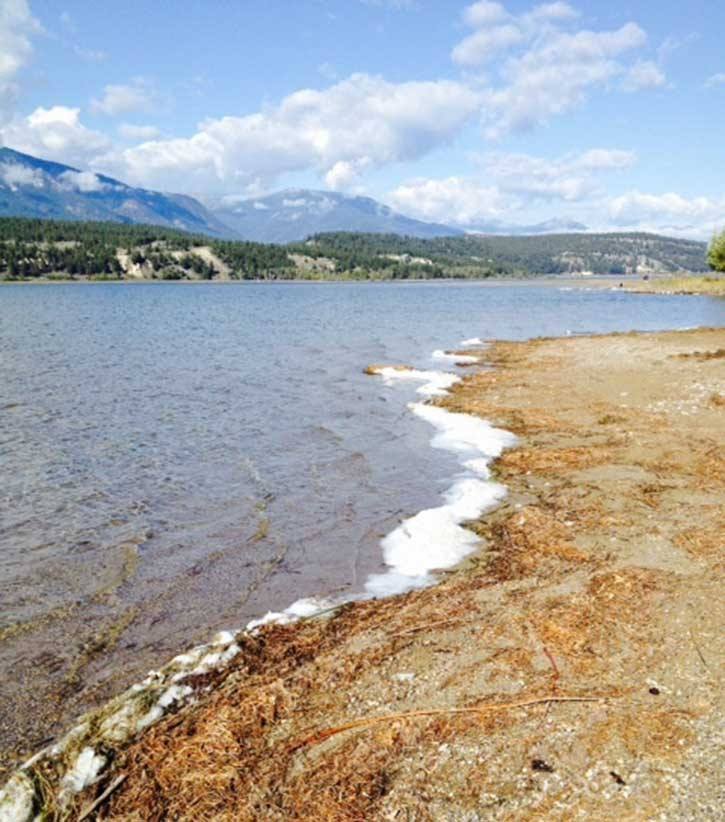 This fall, the Lake Windermere Ambassadors received inquiries from the public regarding foam on the shorelines of the lake.
This fall, the Lake Windermere Ambassadors received inquiries from the public regarding foam on the shorelines of the lake.
Most people were concerned that the build-up of bubbles was caused by something synthetic entering the water by way of runoff and hence a serious concern for water quality and the health of the lake ecosystem.
Our boat crew also noticed foam while we were doing aquatic plant surveys and zebra mussel larvae sampling on Lake Windermere in late September.
Foam can be an indicator of pollution released from human-made products (like laundry detergents). However, it is also a naturally occurring phenomenon resulting from decomposing organic matter in the water, further amplified by windy days and turbulence on the water. So… how can you tell if it’s the “good” or “bad” stuff?
There are a number of common signs to look for to help you determine if the foam you see on the lake surface or shoreline is natural or human-made. A little investigating (if you dare to stoop and give it a sniff!) should give you all the clues you need.
Human-made or synthetic foam (from products like soap and detergents):
• breaks down and dissipates quickly;
• is generally located within a small area near source, does not stand up well to disturbance;
• tends to have a perfumed or sweet smell, added by product manufacturers;
• appears white in colour.
Natural lake foam (congregation of bubbles generated when organic matter enters the lake through decaying plants and fallen leaves, as well as through living organisms):
• has an earthy or fishy smell;
• accumulates in parallel streaks with wind currents;
• is likely to build up in downwind beaches, coves, stream eddies, against docks, logs and other floating objects;
• appears white, tan or brown in colour.
Upon further investigation, the Ambassadors determined that the lake foam of interest was natural and fortunately not likely to be indicative of a substance that could pose a danger to water quality.
Thank you to everyone who called and wrote in to inquire about the suspect foam. Your attentiveness to the protection of our community’s shared homewaters is greatly appreciated by your neighbours and the Ambassadors! Keep up the good work.
Beneath The Surface is based on the principle that there is often more to know than what is visible from the “surface” of an issue. If there is something that concerns you about the lake and you want to get to the “bottom of it,” call Lake Windermere Ambassadors program co-ordinator Megan Peloso at 250-341-6898 or email info@lakeambassadors.ca and inspire the next column!
